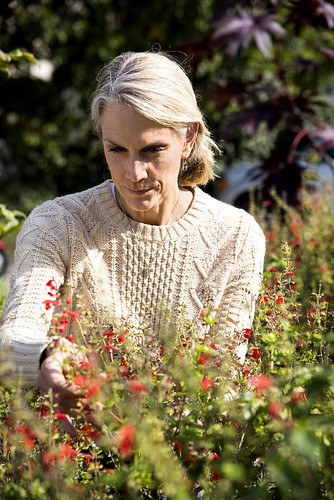Video highlights research on pollinator habitat plots
Fast Facts:
- Urbanization, monocultures contribute to reduction in pollinator habitats
- Pollinators important to horticultural crops, gardens, biodiversity
- Developing pollinator plots in grassy areas offers needed habitat for pollinators
Download PHOTO from Flickr: https://flic.kr/p/2aBVtzb
Related VIDEO: https://youtu.be/8gDeNufc58Q
(392 words)
FAYETTEVILLE, Ark. — Michelle Wisdom stepped up when loss of habitat meant the nation’s pollinators were in need of food and housing.
A video from the University of Arkansas System Division of Agriculture explains Wisdom’s search for ways to incorporate bulbs and other flowers into lawnds and other turfgrass areas as a means of providing much needed habitat for pollinating insects.
Watch the video: https://youtu.be/8gDeNufc58Q
Wisdom conducted the research for her master’s thesis in horticulture.
Bees may be the most widely recognized pollinators of flowering plants, and they are the main pollen spreaders for fruits and vegetables, according to information from the USDA Natural Resource Conservation Service. But many animals help spread pollen about.

Other insects like butterflies, moths and beetles contribute to pollination. So do birds and bats.
Pollinators face challenges from environmental contaminants, disease and parasites. But the most pressing challenge is loss of habitat.
Beginning with an idea from Mike Richardson, professor of turfgrass horticulture, Wisdom began by looking for efficient methods to plant large numbers of bulbs. She found that opening a trench with a sod cutter, tossing them in and covering them up works well.
Wisdom observed them to see if bees or other pollinators would use them early in the spring. She was delighted to see bees feeding on the flowers as early as February.
Wisdom also wanted to find flowering plants that could coexist with bermudagrass or buffalograss during the insects’ active season. “A succession of blooms is best for pollinators,” she said. “Most require diverse pollen sources for good health and a season-long succession of food sources.”
Wisdom discovered that a combination of bulbs, white clovers and a couple other flowering plants that provided a succession of blooms worked well. In addition to contributing to pollinator habitat, the white clovers are legumes that make their own nitrogen and leave enough of it in the soil to help fertilize the grass.
The combination provided a succession of blooms from as early as January through as late as November.
So far, the plants have persisted for two years in her test plots.
Those who want a nice, green, manicured lawn will probably not want clover and other plants popping up through the grass. But results of Wisdom’s research will be useful to homeowners who don’t mind growing flowers in their lawns to lend a hand to pollinating insects.
About the Division of Agriculture
The University of Arkansas System Division of Agriculture’s mission is to strengthen agriculture, communities, and families by connecting trusted research to the adoption of best practices. Through the Agricultural Experiment Station and the Cooperative Extension Service, the Division of Agriculture conducts research and extension work within the nation’s historic land grant education system.
The Division of Agriculture is one of 20 entities within the University of Arkansas System. It has offices in all 75 counties in Arkansas and faculty on five system campuses.
Pursuant to 7 CFR § 15.3, the University of Arkansas System Division of Agriculture offers all its Extension and Research programs and services (including employment) without regard to race, color, sex, national origin, religion, age, disability, marital or veteran status, genetic information, sexual preference, pregnancy or any other legally protected status, and is an equal opportunity institution.
Media Contact: Fred Miller
U of A Division of Agriculture
Arkansas Agricultural Experiment Station
(479) 575-5647
fmiller@uark.edu
Related Links